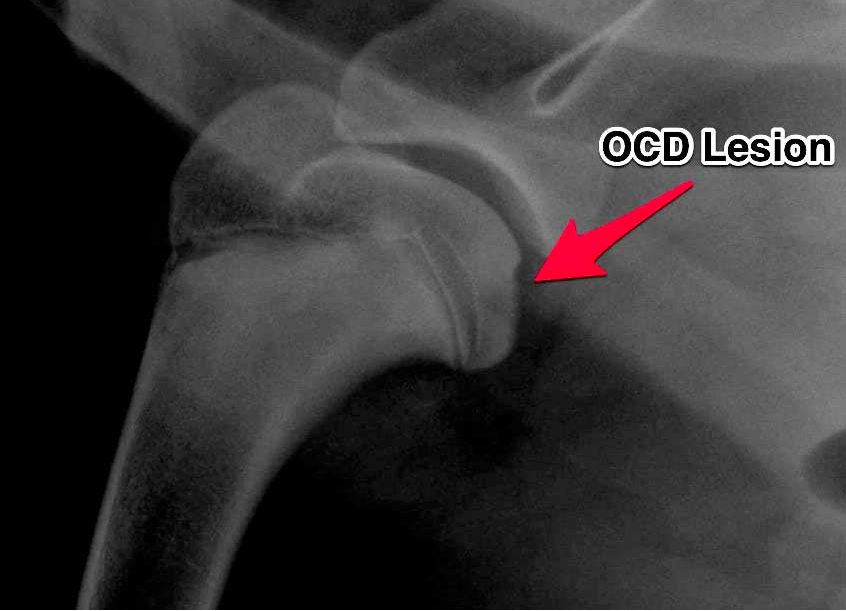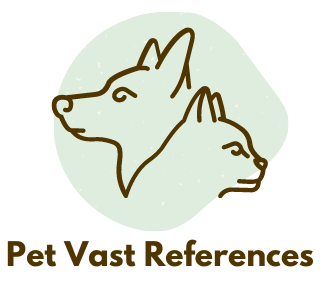OCD or Osteochondritis is a disease when there’s some development defect in cartilage bone tissue. Any joint (knee, ankle, spine) in the body of the dog can get affected by OCD because here cartilage has a great role to play in the smooth gliding of one bone over the other. In this regard cartilage is a flexible tissue that lines or connects the surfaces of two bones. But when the cartilage gets lifted or separated from its place the dog feels pinching pain because the hard surfaces of the bones come in close contact and friction.
Usually, large breed dogs are affected by OCD, especially when they are within the tender age of 4-8 months. But OCD can even happen even in the later stages of a dog’s life. Some of the common dog breeds affected by this disease are German Shepherds, Labrador Retrievers, Great Danes, and likewise. Oftentimes in German Shepherd Dogs, the knee and spine are the vulnerable joints. Male dogs have a high incidence of OCD compared to female dogs.
The Cause Behind OCD

Osteochondritis is a developmental disease of growing bone tissue caused by improper growth of cartilage with respect to neighboring cartilage. Development failure results in the thickening of cartilage and hence it becomes vulnerable to injury. The thickened cartilage is fragile and any kind of external force like a sudden jump or leap of the dog might lead to a crack, wherein the cartilage lifts itself away from the bones. Sometimes the cartilage flap gets fully or partially detached. This causes difficulty in the gliding action of the bones since there’s an abrasive rub between the two bones.
What Signals OCD?
The first signal of OCD is a limp in either one or both hind limbs of the dog, no matter where’s the existence of OCD. But in most cases, knee and ankle joints are affected more than the lumbosacral joint in the spine. The dog faces great difficulty in rising up and shows stiffness while walking. A slinky or lazy gait is a characteristic of the disease because of joint inflammation. The dog tends to avoid stairs and jumping off a deck. The pet loses interest in normal walking and running activities. There’s a lack of enthusiasm for chasing a ball, which supposedly happens to be a favorite activity of the pet.
OCD Diagnosis
Accurate diagnosis is possible through X-rays and CT (Computed Tomography) scans. Diagnosis time is very crucial because if OCD is detected late (past one year), there is a slim chance for the dog to recover.
What’s the Treatment for OCD?
The most effective treatment lies in surgery. But before the development of defective cartilage flaps or lesions preventive action can be taken by the administration of pain-relieving medications like NSAIDs. There are other conservative management measures for OCD like exercise restriction, weight control, nutritional factors, and nutraceuticals like glucosamine. All these are targeted toward normal cartilage development. But when the case has worsened and an abnormal cartilage flap has developed the only way out is surgical healing. Surgery is made through medical processes called arthroscopy (camera and instruments are passed through tiny incisions) or arthrotomy (open-joint surgery techniques).
Genetic management is also important to keep OCD at bay. An OCD dog should ideally be neutered in order to check the inheritance of genetic traits in future generations. Pet owners can take another proactive measure by feeding their pets a low-calorie diet. Calcium supplements are also advised by veterinary experts. The idea behind this is to control the abysmal rate of growth in the cartilage lining the bones.

 Subaortic Stenosis – SAS in German Shepherds: Symptoms and Treatment
Subaortic Stenosis – SAS in German Shepherds: Symptoms and Treatment